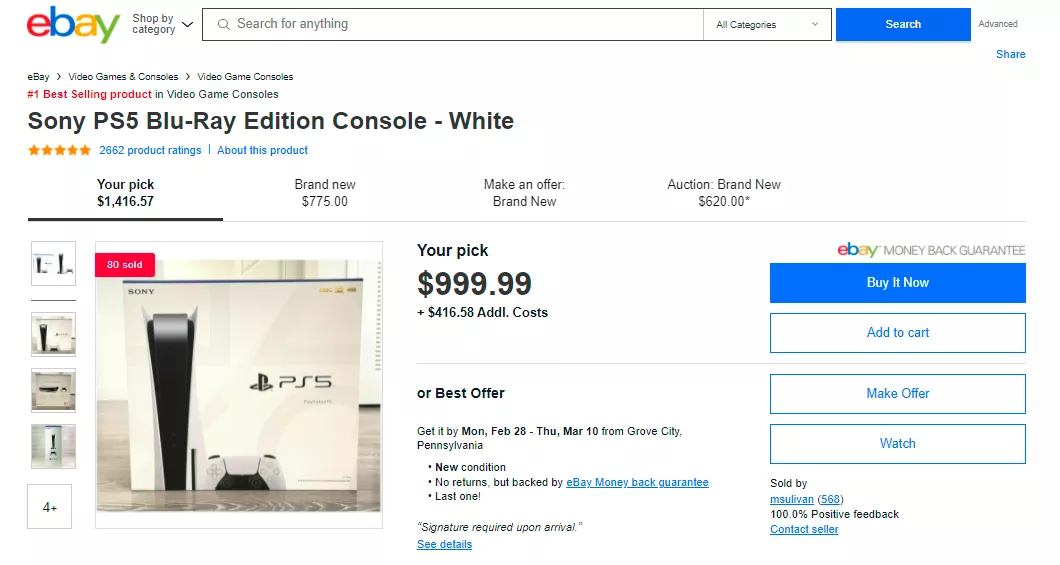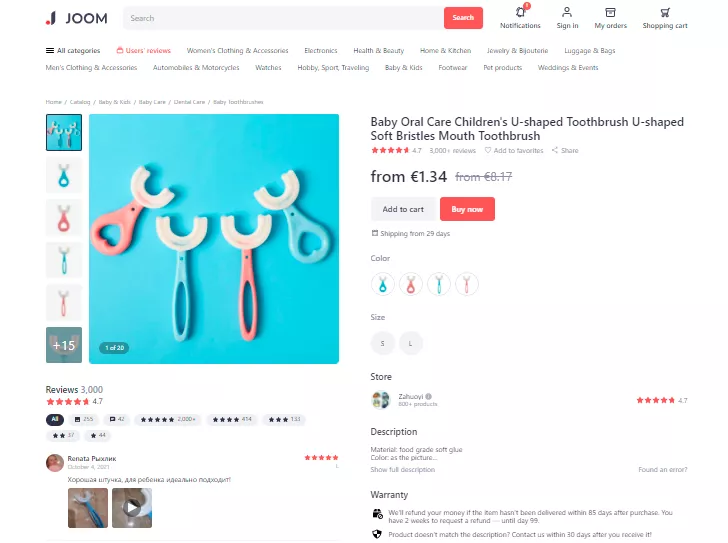What does the content specialist perform in an e-commerce project?
The content specialist is responsible for creating product cards we see on the online storefront. They also moderate and enrich product cards that third-party vendors or distributors import.
The KPI of such an employee is the number of product cards submitted. I would say from Scallium's experience that a good indicator for a content specialist is adding 10 000 SKUs per month, of course, if business processes are calibrated correctly.
Do you think it's unrealistic to process 10 000 SKUs? But such a number is standard for each marketplace, and a significant percentage of them operates with strategically more product pages. Let's consider how they deal with them?
Why does a products' time-to-market take so long?
The content automation issue can not be disregarded. If the processes are not correctly aligned at the scaling stage, a queue of downloaded goods is created. I know projects where the line is more than 100 or even 150 thousand SKUs.
For example, let's take an online store that works with various manufacturers. It needs the following operations:
- Adding product cards to the website (creating detailed descriptions, adding attributes, and selecting the required product category).
- Fill-in cards with information (additional data, text, or visual updates).
- Moderation of goods and their integration with the online store showcase.
A small online shop can manage all these processes with the help of 1 or 2 content specialists. But it's complicated to deal with them if you scale the store or create a full-fledged marketplace with the entire IT infrastructure. Your assortment grows, and a considerable number of vulnerabilities appear inside the processes.
If nothing is done, the time for order processing will begin to increase - the product will appear on the storefront later than usual. In addition, errors occur in the product pages due to the increased volume of tasks. The content specialist will not have time to enter all necessary information on time. He often makes mistakes because of the heavy workload.
Usually, managers try to solve all these issues by opening vacancies for more content specialists. But more efficient options can save your time and money: you should pay attention to the development of automation and modernization of the content department. Let's look at what the market is offering now.
Explore our glossary for essential marketplace definitions to drive your success!
Case of a multi-category online store
A multi-category online store contracted us with a problem: content specialists couldn't cope with the workload; more than 7 000 products were in a queue. We started looking for a solution and discovered the client's current PIM system was a regular product catalog. Suppliers would send their catalogs in Excel, which were added to the current SKU list.
The store tried to improve the situation by hiring additional specialists: the processes improved initially, but the problem appeared again. The budget for salaries had increased, and new staff always had to be trained.
We offered the client not to increase the staff but implement and execute the marketplace platform model with the modern PIM system.
The store has already worked within the dropshipping model, so it did not purchase goods but placed the SKUs of its partners. However they had not yet stepped-up to complete the marketplace model.
How PIM and the marketplace model automate the content department’s work
Let's describe the critical steps.
Step 1. Product cards design
Content specialists manually add data to the product cards or use import tools. The task of the PIM system is to automate processes to make them faster. And marketplace model implies that your suppliers add their products to the platform independently. Your content department only moderates their submitions. So the process becomes even faster, and you can manage massively more product cards per day.
If your online shop uses import tools, they should significantly decrease manual work. The tools have to analyze the values of the attributes during the processes and determine similar products in the system. If so, the platform will just link the supplier's price (offer) to the current product page without creating duplicates.
The marketplace solution can use a tool we call reference cards. They are pre-filled product card templates. This feature can be used by both a content specialist and a submitting merchant - they can reuse these product cards to submit new offers.
Step 2. Updating product cards
If you need to update the data, you can use several excellent tools. For example, you want to correct \ add the same product characteristics for all products in one specific category. You can accomplish this task with just one click and not the tedious procedure of editing 100s or 1000s of product cards separately. We call this feature bulk content operations.
It also happens that a new product batch has been imported, and then you see the same mistake repeated in all product cards, for example, in the brand name. What can you do? You could make changes to all product cards manually. Or you can automate the process and fix the error with our bulk operations tools.
Step 3. Product content moderation
The final step is product content moderation. It's great if everything is automated and the system sets tasks for each responsible employee. When a merchant opens the system and adds new product names, the content specialist immediately receives a system notification about required moderation. Next, if our content specialist doesn't moderate the product card but returns it to the supplier for updating, the merchant who recently uploaded a product receives a system notification about what he has to change.
The content specialist does not need to search for his current tasks but immediately views them on his opened work desk. The single window principle enables you to designate your staff in the content department so you can scale up to the marketplace model.
Related Articles
Automatic Analysis of Customer Data (RFM Analysis) Using Google BigQuery
This article discusses how RFM analysis helps businesses identify their most valuable users, optimize their resources, retain existing customers, and attract new ones
Should I Keep My Blog on a Subdomain for SEO?
Discover whether the idea to keep a blog on a subdomain is worth a shot for your business. See the perks of having your blog on a subfolder based on our expertise.
What Is Amazon Brand Registry and How Does It Work?
In this article, I will explain the program's features, how to register your brand, and how to improve product promotion using the program. I will also present some successful case studies





